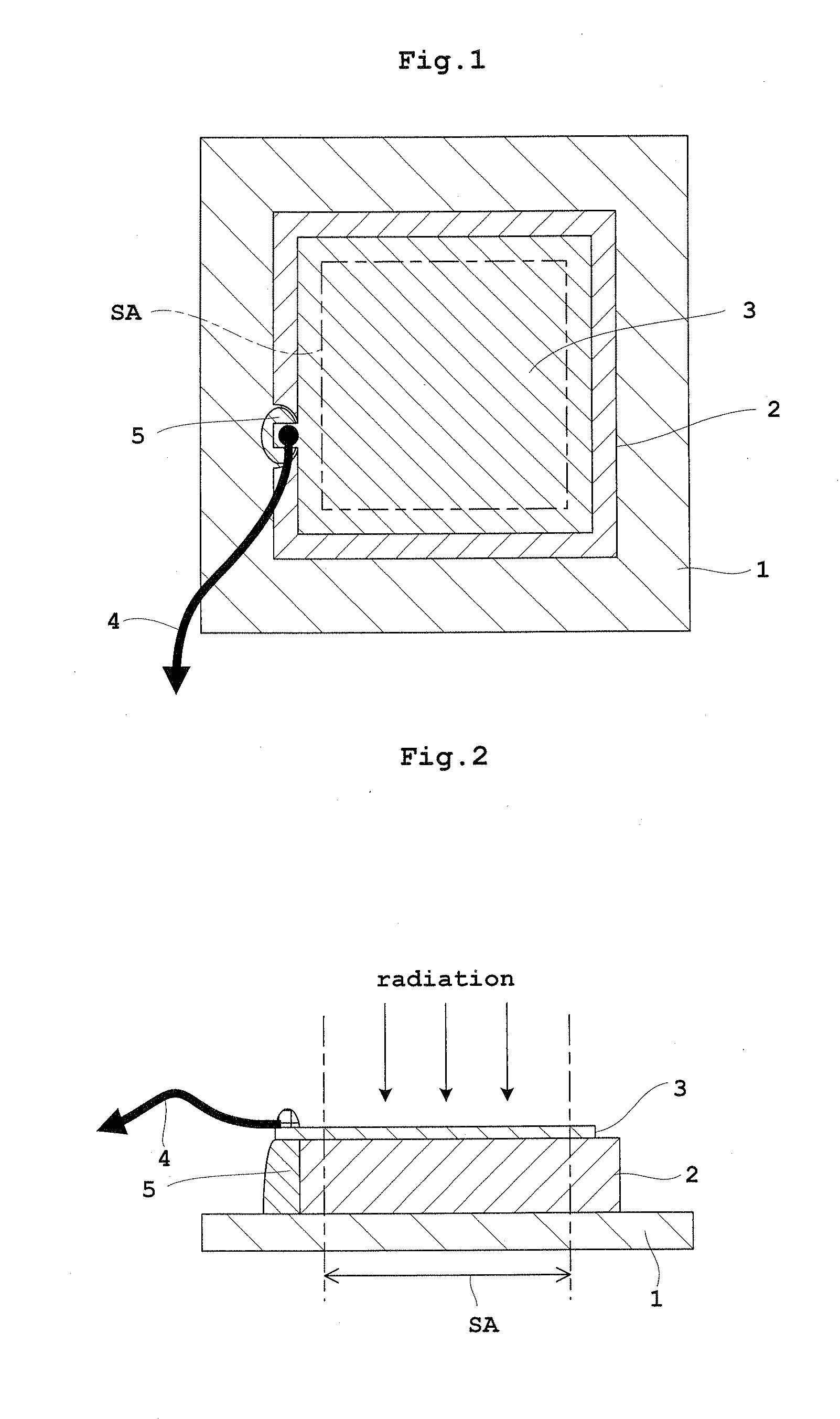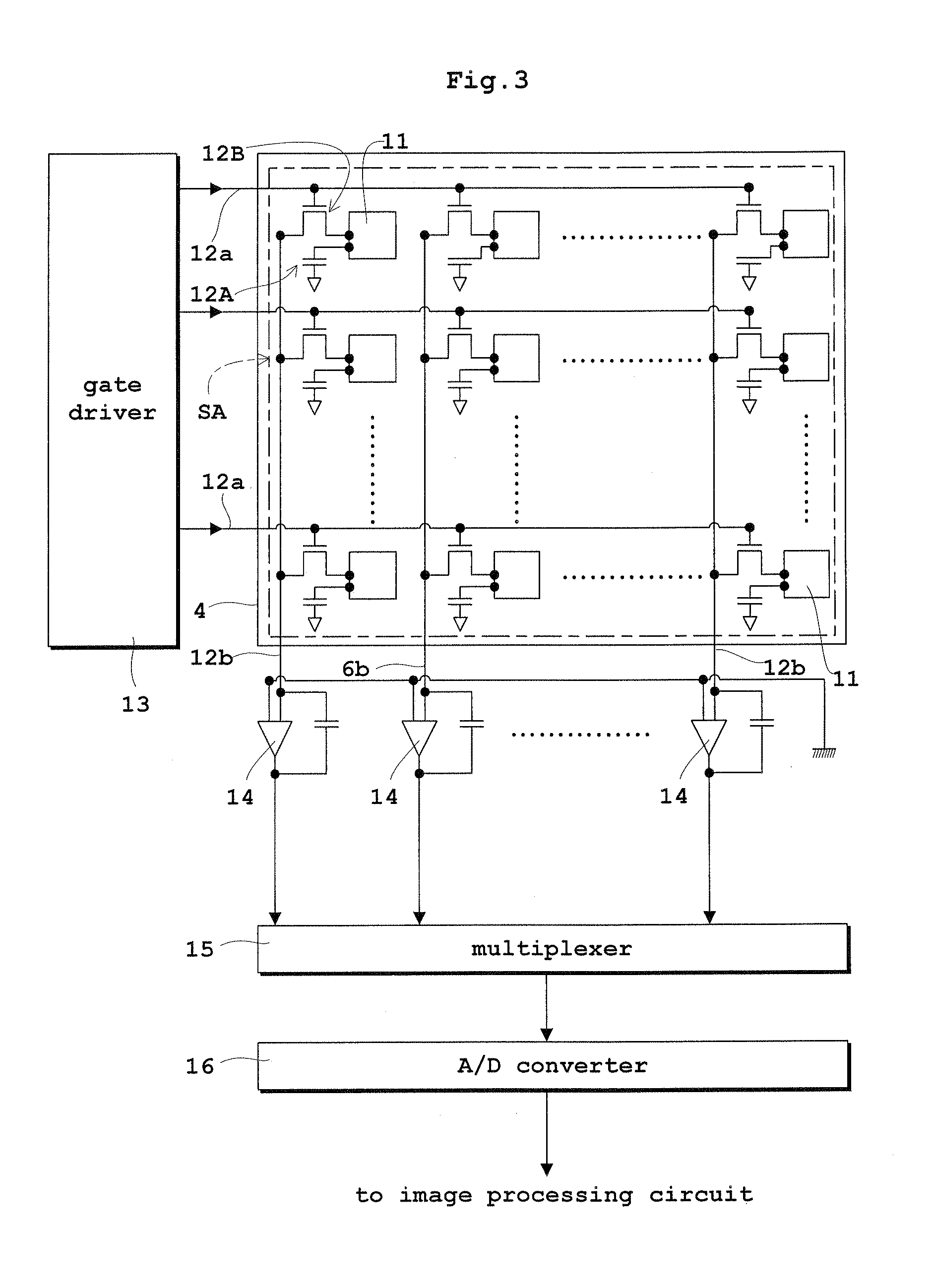Radiation detector
- Summary
- Abstract
- Description
- Claims
- Application Information
AI Technical Summary
Benefits of technology
Problems solved by technology
Method used
Image
Examples
embodiment 1
[0060]Embodiment 1 of this invention will be described hereinafter with reference to the drawings. FIG. 1 is a schematic plan view of a direct conversion type flat panel X-ray detector (hereinafter abbreviated as “FPD” where appropriate) in Embodiment 1. FIG. 2 is a schematic sectional view of the flat panel X-ray detector (FPD) in Embodiment 1. FIG. 3 is a block diagram showing an equivalent circuit of an active matrix substrate of the flat panel X-ray detector (FPD). FIG. 4 is a schematic sectional view of the active matrix substrate of the flat panel X-ray detector (FPD). FIG. 5 is a schematic sectional view of the flat panel X-ray detector (FPD) protected by an auxiliary plate in Embodiment 1. The flat panel X-ray detector (FPD) will be described as an example of radiation detector in Embodiment 1 and in Embodiment 2 to follow.
[0061]As shown in FIGS. 1 and 2, the FPD in Embodiment 1 includes an active matrix substrate 1, a radiation sensitive semiconductor 2 for generating elect...
embodiment 2
[0093]Next, Embodiment 2 of this invention will be described with reference to the drawings. FIG. 8 is a schematic sectional view of a flat panel X-ray detector (FPD) in Embodiment 2. Parts in common with foregoing Embodiment 1 are designated by the same reference numbers, and will not be described again, or shown in the drawings.
[0094]As shown in FIG. 8, the FPD in Embodiment 2 has a collimator 9 for preventing the radiation (X rays here) incident on the radiation detection effective area SA from impinging on edges of the common electrode 3 including the connection to the lead wire 4, and the seat 5. The collimator 9 corresponds to the collimator in this invention.
[0095]Electric fields formed by application of the bias voltage concentrate on the edges of the common electrode 3 and the seat 5. When the radiation impinges there, contingent strong currents could flow, that would cause a failure of the FPD (in particular, breakdown of TFTs 12B of the storing and reading electric circui...
PUM
 Login to View More
Login to View More Abstract
Description
Claims
Application Information
 Login to View More
Login to View More - R&D
- Intellectual Property
- Life Sciences
- Materials
- Tech Scout
- Unparalleled Data Quality
- Higher Quality Content
- 60% Fewer Hallucinations
Browse by: Latest US Patents, China's latest patents, Technical Efficacy Thesaurus, Application Domain, Technology Topic, Popular Technical Reports.
© 2025 PatSnap. All rights reserved.Legal|Privacy policy|Modern Slavery Act Transparency Statement|Sitemap|About US| Contact US: help@patsnap.com



